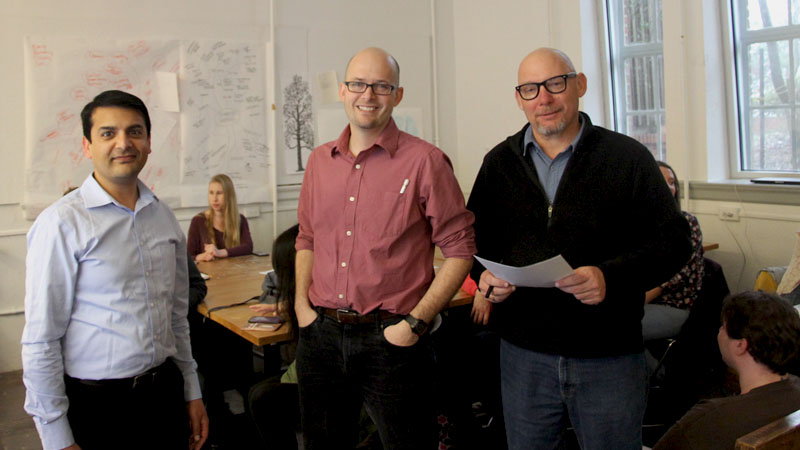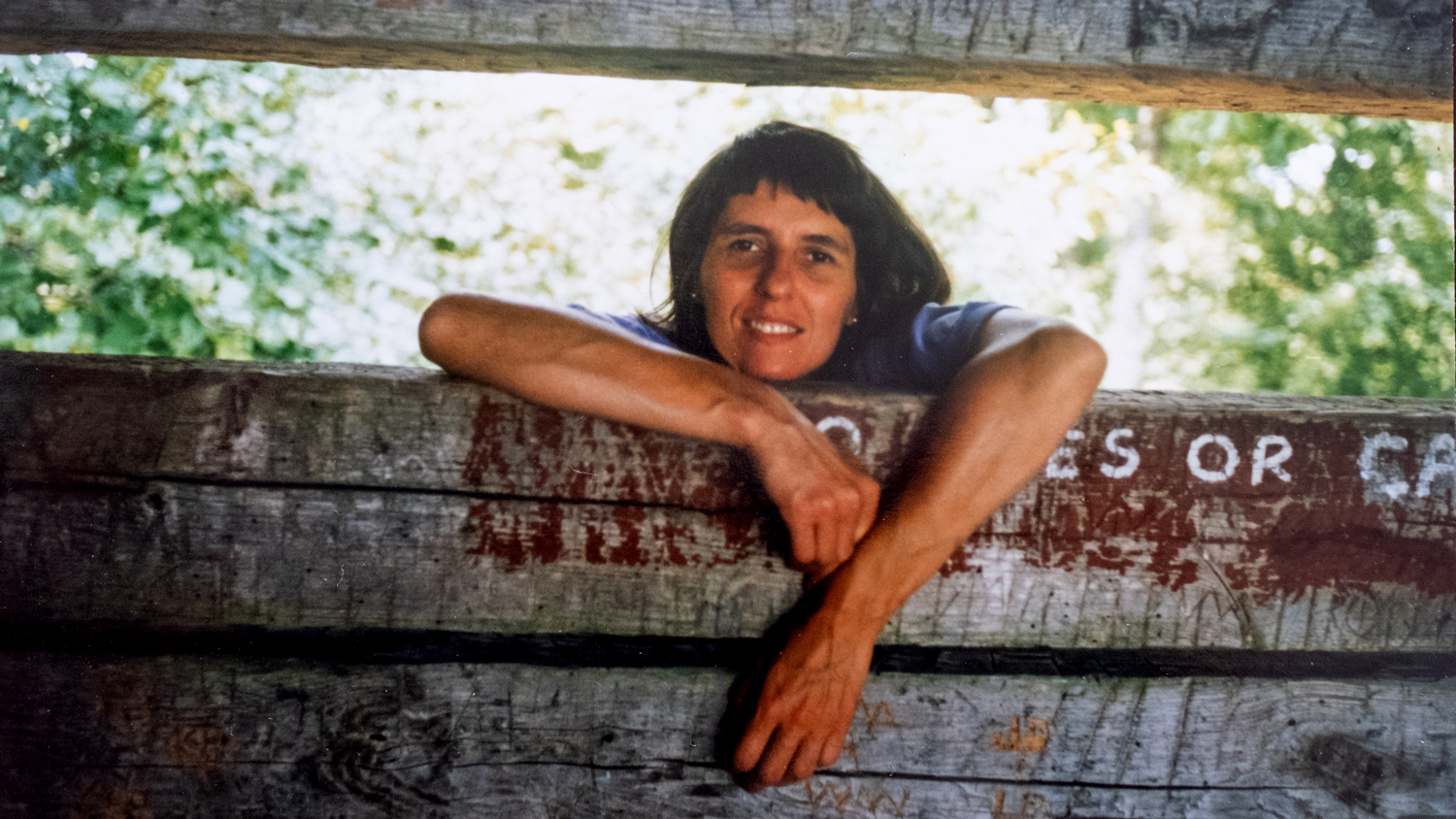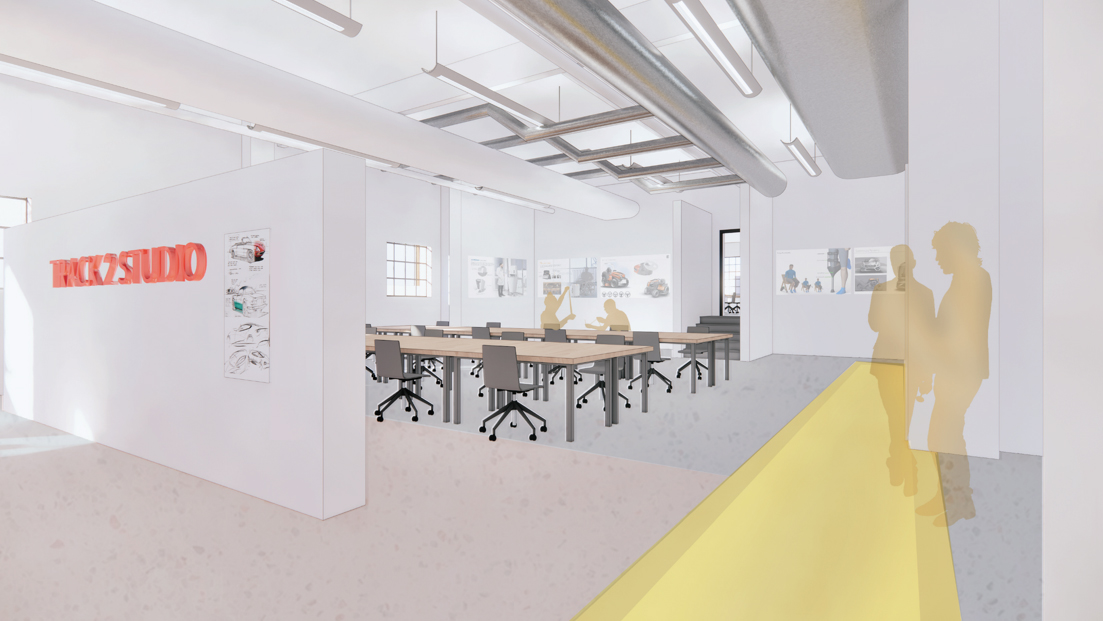Interdisciplinary Collaboration Creates New Roles for Designers
Traditionally, designers have been thought of as image makers, but Assistant Professor of Art + Design Todd Berreth is showing how designers can use technology and interdisciplinary collaboration to push the boundaries of design. Berreth is part of the Visual Narrative Cluster (VNC), an interdisciplinary group of researchers at NC State University who are experimenting with technology and communication to increase understanding of the narratives told about the past, present, and future. Berreth’s collaborative work with other researchers, his contributions to projects within the VNC, and his teaching demonstrate that, in addition to image makers, designers can be storytellers, systems builders, problem solvers, intermediaries, educators, and community-engagement facilitators.
Though Berreth’s research interests are rooted in cutting-edge technology, his design projects span the breadth of time and space. In a recent collaborative project, Berreth worked with Maurizio Forte, Ph.D., an art professor with Duke University, to design an interactive exhibit installation for the Museum of the Imperial Forum in Rome. The installation imagined a possible reconstruction of Trajan’s Weapon’s Frieze, of which only fragments remain. Berreth designed a simple table system, made with a laser cutter, 3-D printed artifact replicas, and a Raspberry Pi computer and camera. When a user places a replica into its correct position on the table, video content on a wall-mounted screen is triggered, explaining and contextualizing the piece within the overall narrative of the frieze. Physically holding and manipulating the artifact replicas allows users to feel a connection to the past and experience a sense of shared cultural heritage.
This hybrid of digital and physical interactivity may be the future of museum design. “Increasingly in the next 10 to 15 years, there’s going to be more and more opportunities for us to develop digital systems that interact with physical objects, creating experiences that are interesting and engaging,” Berreth says. Museums have been experimenting with digital interactive exhibits for some time, but have run into some problems. Interactive elements can slow down the general flow of the exhibit, and while virtual reality experiences also allow for audience participation, people are often uncomfortable wearing shared headsets that may pose sanitation issues such as pinkeye and lice or are concerned about losing track of family members and personal items while wearing the headset. In this case, Berreth’s work is as much problem solver as designer. The table can be used socially, by more than one person at a time, and the projected wall display can be viewed by many. Additionally, because the design of the table is so simple, it can easily be reprogrammed and new 3-D pieces can be printed to create an entirely new installation for a future exhibit or application.
Because of the table’s universal potential, Berreth and his research assistants are creating an instructional guide that will simplify the project to a generic tool kit. Berreth imagines it being especially useful to those in the arts and humanities. He says, “Designers are great intermediaries. We can create a bridge, a common vision, between interdisciplinary groups of people. The arts and humanities have great stories to tell. Engineering and computer science create technical capability and can build these amazing interactive systems. Designers work as a third leg in that tripod, helping facilitate communication, build visions, and design compelling experiences.”
Increasingly, designers are working in liaison roles, facilitating collaboration and filling in the gaps between two interdisciplinary groups. As a designer, Berreth is working collaboratively with members of the VNC to use technology and storytelling to achieve larger goals of community engagement and create a sharing-rich culture. The VNC includes Berreth; Matthew Booker, associate professor of history; Arnav Jhala, associate professor of computer science; Frederico Freitas, assistant professor of history; and Tianfu Wu, assistant professor of electrical and computer engineering. An overarching goal of the VNC is to facilitate and engage in next-generation storytelling—telling stories through computational media such as virtual reality, mixed or augmented reality, computer vision, and visual analytics. A guiding question of the group, Berreth says is, “how do we use these new technologies to effectively communicate?”
The VNC’s current project, Urban Panorama, aims to provide “historians with an interactive tool that will help geolocate and chronolocate historic photographs.” Berreth’s design and architecture skills will combine with other VNC member’s coding and historical knowledge as the cluster moves forward on this project by “training computer vision and machine learning to find new information and patterns in archives of historic photographs.” While Google street views provide a present anchor, and historic photograph archives are an untapped resource from the past, for the project to be most successful, the cluster hopes to engage the public and encourage them to contribute their streetscape photos by gamifying the process. Doing so would create a database of countless angles and variations of the same location, creating a rich dataset that shows the changing of time and space, mapping urban change, and creating a “4-D reconstruction of history,” Berreth says. When the public is engaged and participating, Berreth points out, they become “citizen scientists who are informed, politically engaged, and interested in preserving their world.”
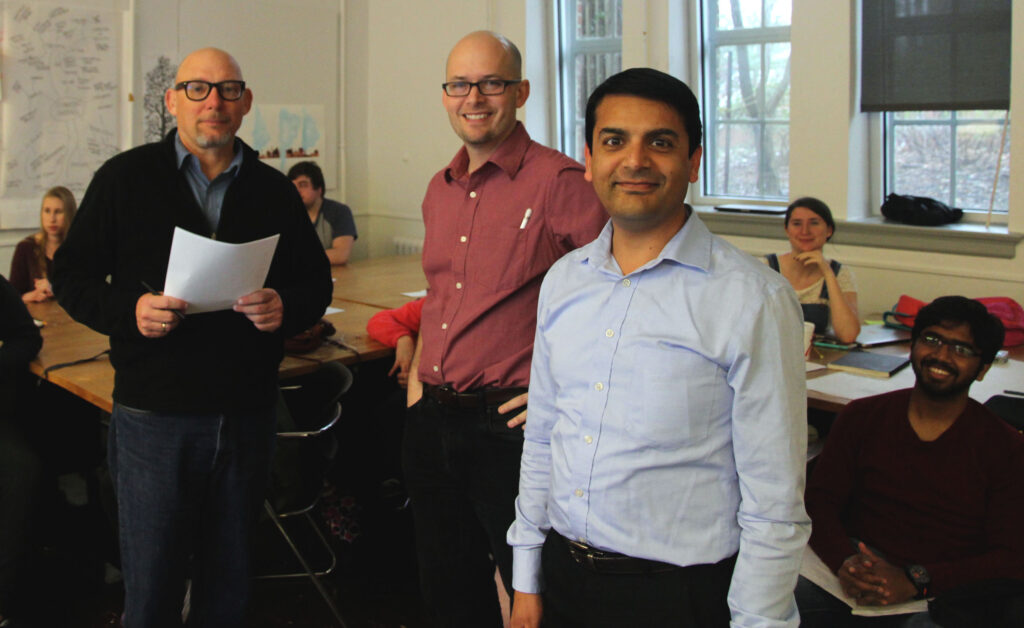
Berreth is also an advocate for an interdisciplinary approach to design in the classroom. He is currently co-teaching a combined computer science and design studio with Jhala and Associate Professor of Art + Design Pat FitzGerald. Next fall, Berreth hopes to co-teach a combined history, computer science gaming, and design course. These collaborative classes are important, Berreth explains, because “we are teaching the value of interdisciplinary work and also building these interdisciplinary projects that couldn’t happen in any of the one disciplines by themselves.”
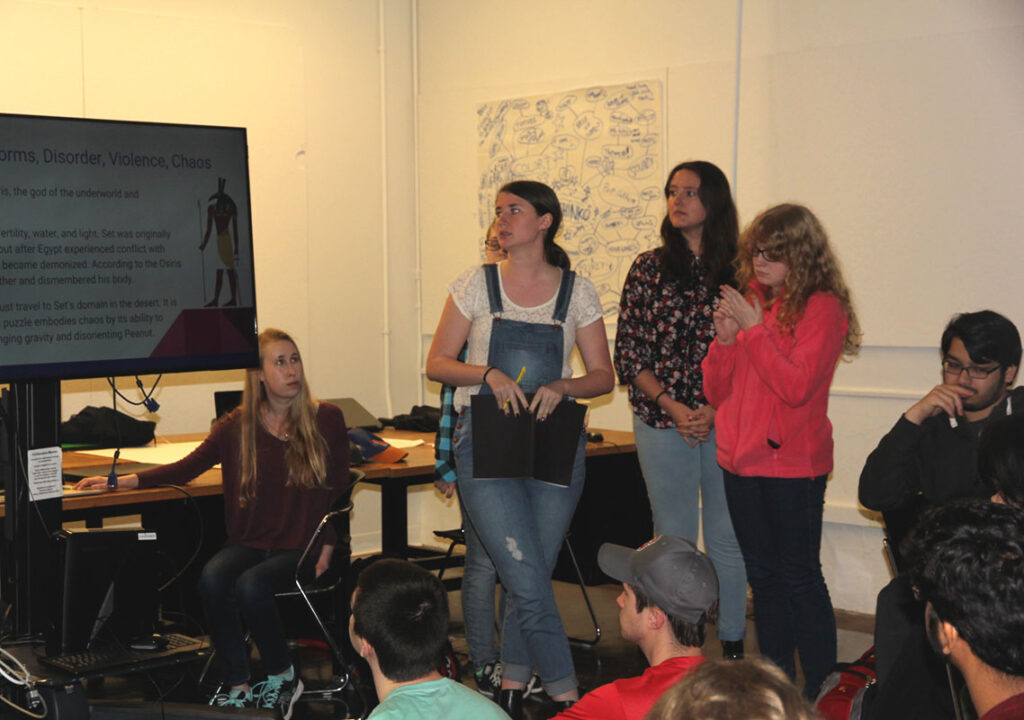
One group of this semester’s students is working on a project design for the Museum of Life and Science. Berreth says that increasingly, courses are being designed to offer collaboration with a “real client who sets the expectations for the project.” Students in this group are working to design and code an interactive, social play game for a museum wall. “The trick,” Berreth says, “is designing a game that encourages social interaction between kids and that is understandable very quickly.” Berreth is hopeful that by the end of the semester they will have a working prototype and that it could turn into a summer internship at the museum where students push the project to completion.
Berreth wants his students to see coding as another tool for design and storytelling. “I personally hope to increase the technical capabilities of our students and encourage more of them to see technology as approachable. As you get older, you become less willing to dive in and figure things out.” Interdisciplinary technology-based projects, like the social play project Berreth’s students are working on, help reduce fear and apprehension that can surround new technologies. It is important to manage these fears, Berreth says, because “designers should be able to build a prototype even if it isn’t fully engineered; they should have something that can communicate their idea.”
Berreth’s personal projects, teaching, and work with the VNC take a broad-thinking, technology-based approach, but at the core of it all is narrative and collaboration. “The VNC is a community resource of people coming together and exploring the potentials of digital technologies but also making these technologies more accessible to storytellers. It’s not just about one particular collaboration or technology. It’s finding new ways to tell compelling stories. The VNC is not just about the five of us, it’s about the broad networks of people who come together at this place. I like to think of this, as much as possible, as a broader community.”
A collaboration between Duke University’s DIGG Lab and NC State’s Visual Narrative Cluster. This tangible-interaction, digital installation was exhibited at the Museum of the Imperial Forum/ Trajan Market in Rome, Italy, as part of the commemoration exhibition honoring the 1900-year anniversary of Emperor Trajan’s death. The table premiered at the grand opening gala, on Nov. 17, 2017.
Staci Kleinmaier is a professional writer and photographer living in Apex, North Carolina. She uses words and images to tell stories. To see her work, visit www.stacikleinmaier.com.
- Categories:
